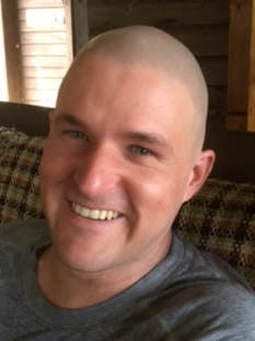From a philosophical point of view, the question of “what is addiction?” revisits the age-old question, “Is the essence of human nature good or bad?” In the ever-telling pursuit of truth, the answer lies in the journey as the philosopher sits patiently and waits to have you quantify two extremes. “Who is asking the question?” the philosopher asks while waiting to observe a spark of enlightenment. Any two extremes exist in contrast to one another; hence they are a part of the same process. For example, night and day are relative to the observer and the truth of the answer lies in timing of the question. Pain and pleasure, an obvious example of opposites, are understood by reference to one another. This is illustrated in the Taoist concept of Mutual Arising and the Buddhist concept of Dependent Origination (Watts, 1975). Both of these concepts imply that you cannot have one without the other – if one ceases to exist, so does the other i.e., existence and non-existence must co-exist.
Here we enter into the paradox of addiction. What feels good is actually bad. The addicted person’s “choice” to pursue a course of action that is ultimately harmful isn’t logical! The person who is addicted and the outside observer understand addiction from different perspectives. Both understandings are right since the context of each perspective is important for shaping the ways in which we come to define, know, and treat addiction: The person who is in an addicted state is much more feeling or emotionally oriented, while the outside observer is more focused on the illogical nature of the outcomes. These are often the result of short-term vs. long-term thinking, hence adding to the dualistic nature of opposites.
Addiction’s Paradox in the Brain
These two perspectives come from different sides of the brain. The left side of the brain houses logical processes that use verbal language and the right brain houses emotional processes that use non-verbal communication (Siegel & Bryson, 2011). The different sides of the brain speak two different languages and represent the argument of “choice or disease.” The choice argument, associated with the logical or left side of the brain, is correct in saying that there is a choice in any behavior. But I had to ask myself, where does the brain get the information to make those choices? The answer lies in memory systems, which include our unconscious reptilian brain. The reptilian brain has one mode and primary function: survive by any means necessary and is only interested in short-term outcomes. Survival needs include staying alive in dangerous situations (pain) as well as ensuring that procreation happens (pleasure). The fact that pleasure is a survival need means that pleasure is a main motivator for addictive behaviors.
Survival mode fluctuates due to environmental stresses and stimuli, but also it is not alone in processing information. There are higher levels of brain functioning like decision-making processes that take place in the neo-cortex and mid-brain and with which the survival brain must communicate. However, when the survival brain is activated, it dominates the higher levels of functioning by controlling the information through regulation of the blood flow in preparation for fight, flight, freeze, or appease when a perceived danger or opportunity for pleasure is present. So, the innate drive to survive is what informs our decision-making process or “choice”, particularly when confronted with danger or our need to satiate with pleasure to ensure procreation.
So what are the physical and psychological symptoms of addiction (pleasure)? Intrusive reminders, dreams about the experience, mood irregularities based on whether or not the pleasurable experience is going to happen, strong emotions related to everything, and distorted beliefs about anything and everything… “Wait a moment, trauma, is that you? It is like I am looking in the mirror and it is me but not me.” “Yes. It is me, trauma. I have been hiding in addictive behaviors.” So, trauma and addiction are a part of the same process and that is why I say that addiction is trauma (in its positive form and relative to the observer). Conversely, I can also say that trauma is addiction but will have to save that twist until the end.
In order to see how addiction is traumatic, we have to see beyond the idea that addiction is a choice (which ultimately implies fault and produces the stigma of addiction) and the disease argument. These are not the only options. If we attempt to observe addictive behavior without the “addiction is a choice or disease” framework, what is happening? The body is being injected with poison, smoke is in the lungs, neurological systems are being physically stressed by being overloaded and flooded with neurotransmitters, or one is drowning oneself with something flammable – the survival of the organism is being threatened and it likes it. The body remembers experiences like chicken pox or environmental toxins because it might have to defend itself again, just like it remembers the addictive behavior and the effects of the behavior as means of survival. In this sense the body is practical and functional in performing this neutral action and as Deb Dana (2018) points out, the autonomic nervous system does not calculate “good or bad” it just performs its obligation to survival. With respect to understanding addiction as a disease, we must see how addiction behaviors produce trauma in the organism and create traumatic memory. At a symptoms level, active addiction is more reflective of Acute Stress Disorder (ASD) or Post-Traumatic Stress (PTSD), which boils down to unresolved traumatic memories (Shapiro; 2001, ver der Kolk, 2014; Ecker, Ticic, & Hulley, 2012).
Body and mind meet when memory is formed or accessed. Both the body and the mind access memories to guide their decision-making process and when these experiences are referenced; this is what informs the decision-making process. There are different types of memory and they perform different tasks with different responsibilities to help us get through the day. What in our understanding is not based on memory? Genetics, language, and the entire universe are all series of events, remembrances, and links in a chain connecting the present moment to the past. Both trauma and addiction create stress in the body and mind. Positive stress is still stress. Biological symptoms of addiction speak to withdrawal, cravings, and triggers but these can be understood as physical manifestations of PTSD symptoms because bodily operations and responses are a form of memory. Yet if there is a disconnect between the higher and lower functioning’s of the brain or the lateral exchange of logical and emotional content then there is going to be dysfunction. So, fundamentally addiction should be understood as a manifestation of PTSD. Moreover, Addiction and trauma can be understood as two poles on the spectrum of dissociation
Dissociation is the Relationship Between Addiction and Trauma
Van der Hart, Nijenhuis, and Steele (2006) cite Pierre Janet’s early observations from 1887 that dissociation is a “division of the personality or of consciousness” and that these include “systems of ideas and functions that constitute personality (2006).” In essence, dissociation is the process of disconnecting from the conscious or present moment due to a stress and acts as a defense mechanism for the “personality.” Both addictive behaviors and occurrences of trauma induce dissociation due to the impact on the state of consciousness that occurs during the response or act. The types of events and frequency ranges from a single incident to way too many to count, so they can be seen as on a spectrum as well. Ross (2013) sees PTSD as on a dissociation spectrum but does not identify addiction as on the spectrum of trauma-related dissociation. Yet Ross and others miss the point that the body is neutral when a toxin, which creates a trauma, invades the body, mind, and memory system. To include addiction on this spectrum, even if it is induced-dissociation (which I think that there is more to it then just that), means that we have a fuller picture of our pathology and of human behaviors like self-harm, sexualized behaviors, all forms of abuse, dependent issues, obsessive-compulsion, suicidal ideation, eating disorders, perfectionism, entitlement, abuses of power, and personality disorders.
I propose, as Ross suggests (2013), that trauma is really on a dissociative spectrum but I would also like to include addiction-induced dissociation because the impact is similar on the psyche i.e., Dr. Jekyll and Mr. Hyde as different aspects or parts of the personality emerge when under the influence. All addictive behaviors mimic existing states in the body and mind (Inaba & Cohen, 2007) and so dissociative states are going to be produced in addictive behaviors. This is why I believe that we should be focusing on trauma and dissociation when understanding, treating, or making addiction simple enough to understand.
Traumatology has provided a roadmap for categorizing mental health disorders. I feel that a better understanding addiction would lead to a similar understanding, i.e. would create more space for trans-diagnostic treatments. Over the past two decades, Traumatology and Trauma-Informed Care has greatly increased our understanding of trauma but has not identified one core ingredient as its cause. We still must ask, under what conditions do most traumas occur? I would suggest that our addictions (being in a state of trying to satiate unmet survival needs via harmful behaviors) are an answer to that question. Here we can see the intimate relationship between trauma and addiction, wherein addiction is a function of trauma, and the core ingredient of trauma can be understood in terms of addiction. This is why our human drama unfolds the way it does. We become addicted to our stories and our stories become addicting and create the traumas from which we can heal. At its core, our addictions are wants labeled as needs. The results of trying to get our mislabeled needs met, we creates trauma. Our addictions are traumatizing to society and culture and represent a major disconnection between our logical and our emotional world.
Conclusion
To make addiction simple, we simply need to look at it as if it were a trauma because they are a part of the same process. To redefine addiction in this light we see that it is the relationship between trauma and addiction that needs to be defined and determined whether or not it is healthy for ourselves. When we define addiction accurately and categorize it appropriately we find that it is traumatic and produce ASD/PTSD symptoms and dissociation. Luckily we have effective treatments for addressing both, we just need more clinicians experienced in treating all three.
References
Dana, D. (2018). The polyvagal theory in therapy: Engaging the rhythm of regulation. New York, NY: W.W. Norton & Company.
Ecker, B., Ticic, R., & Hulley, L. (2012). Unlocking the emotional brain: Eliminating symptoms at their roots using memory reconsolidation. New York, NY: Routledge.
Inaba, D., & Cohen, W. (2007). Uppers, Downers, All Arounders: Physical and Mental Effects of Psychoactive Drugs. Sixth Edition, Medford, OR: CNS Publications, Inc.
Lanius, U., Paulsen, S., & Corrigan, F. (2014). Neurobiology and treatment of traumatic dissociation: Toward an embodied self. New York, NY: Springer Publishing Company.
Marich, J. (2014). Trauma made simple: Competencies in assessment, treatment and working with survivors. Eau Claire, WI: Pesi Publishing & Media.
Ross, C. (2013). Structural dissociation: A proposed modification of the theory. Richardson, TX: Manitou Communications, Inc.
Siegel, D., & Bryson, T. P. (2011). The whole-brain child: 12 revolutionary strategies to nurture your child’s developing mind. New York, NY: Bantam Books Trade Paperbacks.
Shapiro, F. (2001). Eye movement desensitization and reprocessing (EMDR): Basic principles, protocols, and procedures. New York, NY: Guilford Press.
Watts, A. (1975). Tao: The watercourse way. New York, NY: Pantheon Book.




